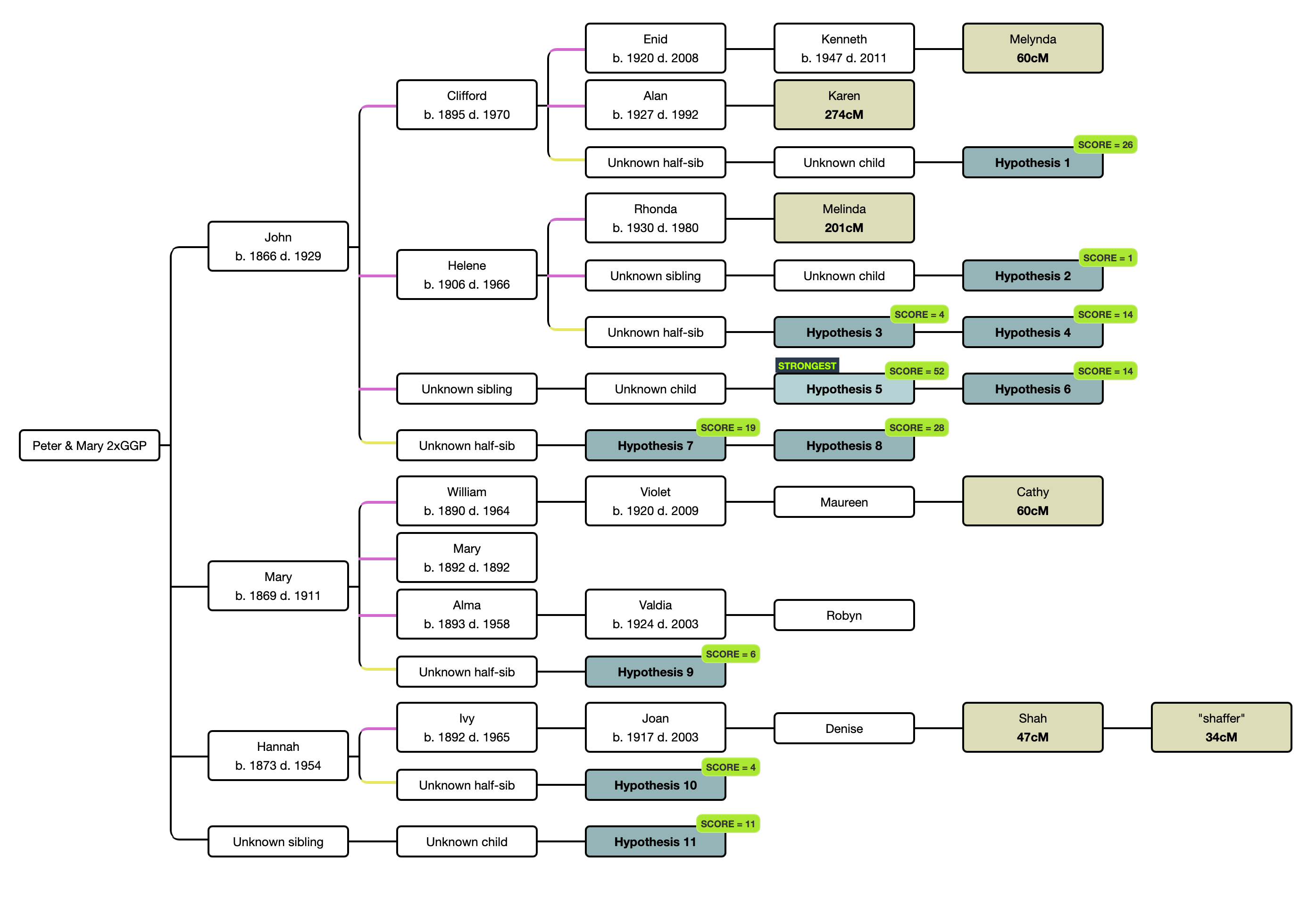MODULE 4 Activity: Getting to know WATO

In this activity, you're placing yourself (the target/tester) into a well known tree - your own well researched tree! Chose one of your great-great-grandparent couples where you have a group of known AncestryDNA matches who have that couple as your MRCA. Build a WATO tree from the great-great-grandparent couple out to each of the matches where your shared DNA is less than 400cM and enter the cM you share with these matches. Select "switch to beta probabilities" - do this whenever you're using AncestryDNA matches, Use the "Suggest Hypothesis" function at WATO and delete any hypotheses that don't meet the "time and place" criteria. Which hypothesis are you? Is it the strongest hypothesis? Now include any matches where your shared DNA is between 400cM and 1500cM and enter the cM you share with these matches. Use the "Regenerate Hypothesis" function at WATO and delete any hypotheses that don't meet the "time and place" cri
